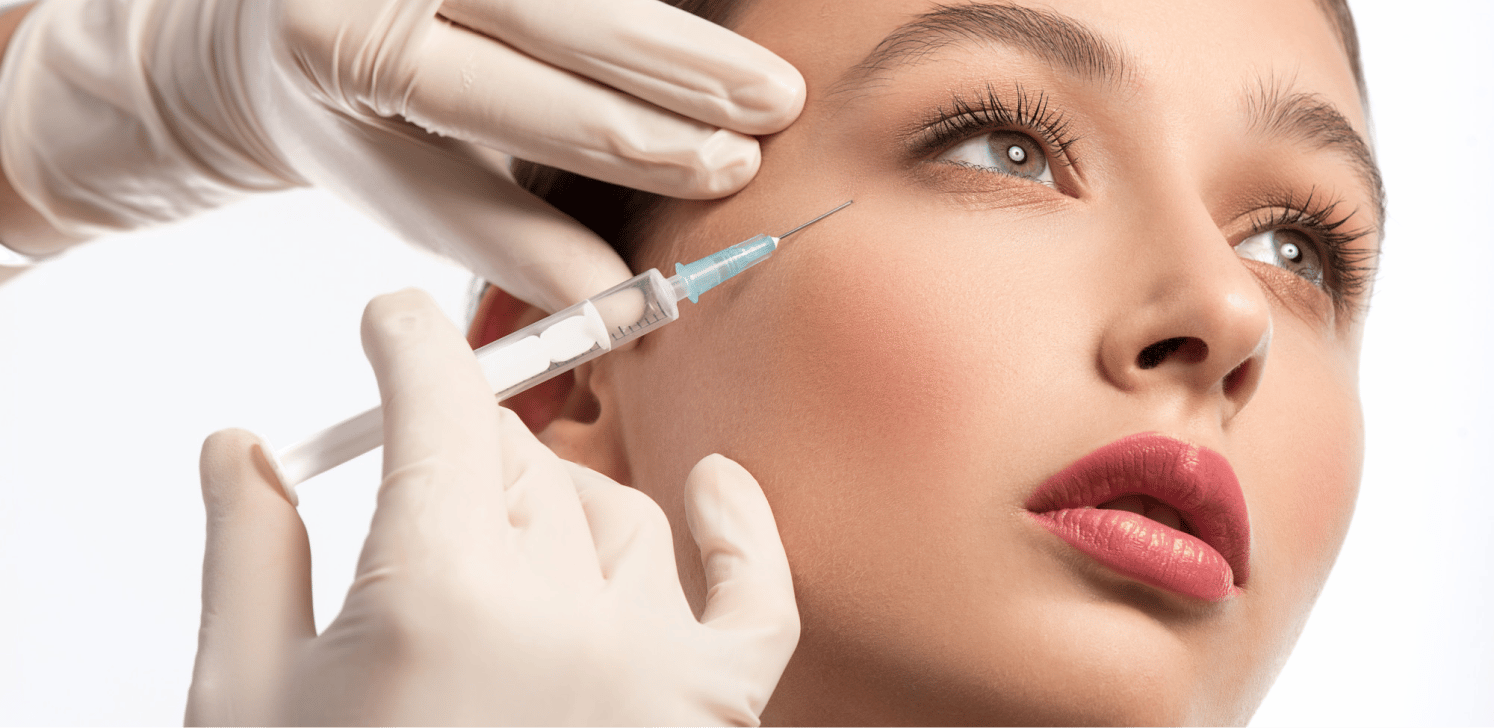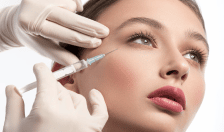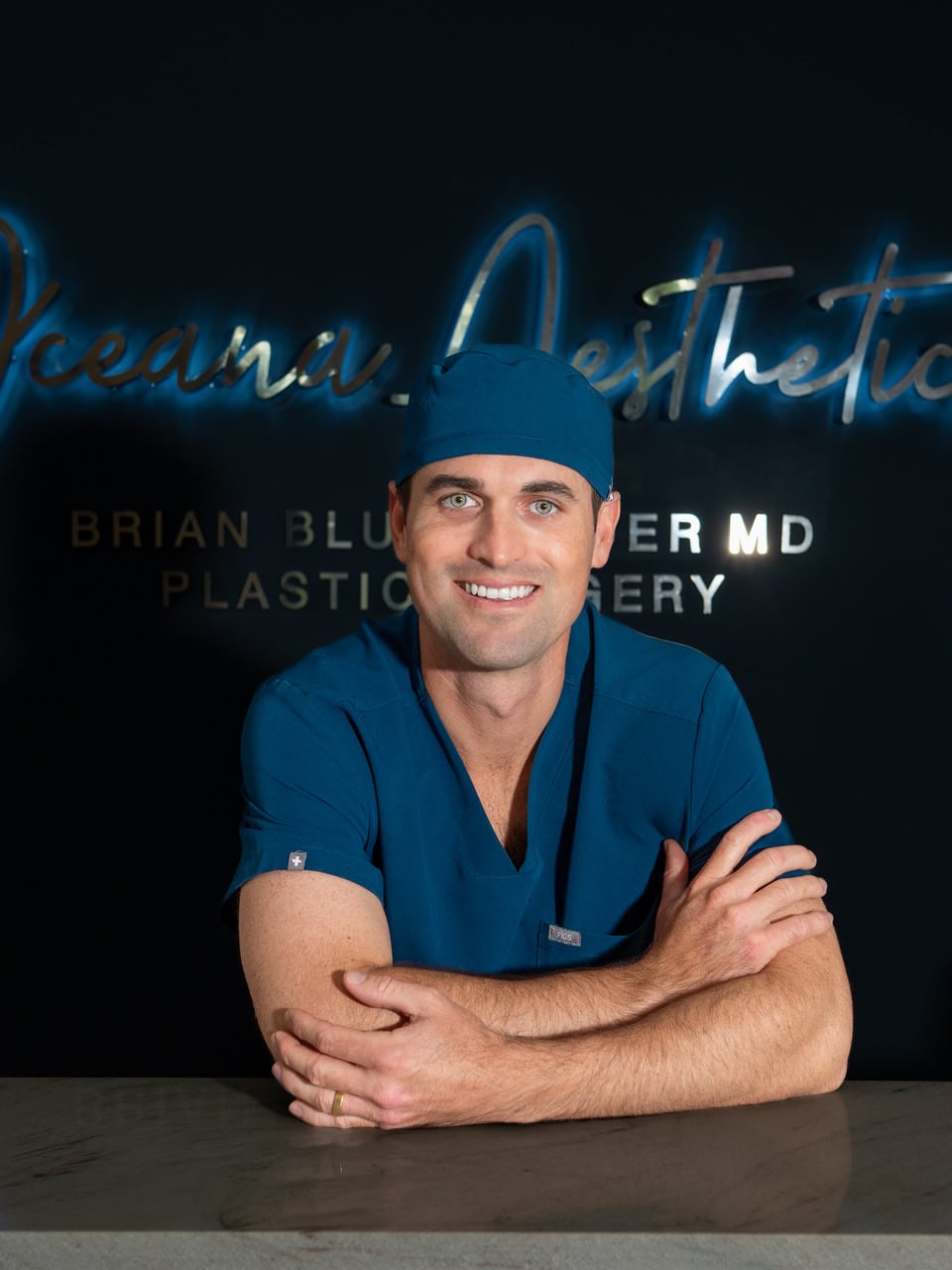
In this guide, we discuss the difference between Botox vs fillers, discovering what they are and how their effects differ.
Plastic surgery and minimally invasive treatments are not just for celebrities and Orange County housewives anymore – almost 18 million people in the U.S. underwent some sort of corrective procedure in 2018.
And among the most popular treatments, wrinkle relaxers (Botox) and dermal fillers are at the top of the list.
Both are treatments commonly used on the face to minimize wrinkles and other signs of aging, but what’s the difference between the two? Keep reading to find out more about botox vs fillers and which treatment is right for you.
What are Wrinkle Relaxers?
Wrinkle relaxers, more commonly known as popular brand name Botox, are made from a pure, natural protein with the main function of reducing the appearance of wrinkles and fine lines.
In the most basic sense, this protein gets injected into the muscles in the problem area(s) and acts as a sort of roadblock to the brain, telling it to stop signaling the muscles in the face to contract.
The “relaxer” name comes from the protein’s ability to stop muscles from moving or “relaxing”. Constant muscle movement caused by furrowing the brow or smiling is what causes wrinkles, laugh lines and crow’s feet.
Botox is the most common brand of wrinkle relaxers along with Dysport by Galderma. They are safe products. They have undergone rigorous testing over the years and is completely certified and FDA approved.
Though there is a certain stigma around Botox procedures, the treatment has evolved over time and is now widely considered as a safe way to eliminate and reduce the signs of aging.
It is used to help both men and women increase their confidence by feeling and looking younger, and the stigma is now beginning to fade as the treatment becomes more and more popular.
In addition to helping people look younger, Botox and Dysport are also used to treat a condition called hyperhidrosis, more commonly known as excessive sweating.
This procedure works the same way. It gets injected into the problem area and blocks the nerves that produce excessive sweat.
Regardless of the type of treatment, the treatment only takes a few minutes and the patient is able to go about their daily life as usual immediately after.
Are There Side Effects?
Botox and Dysport have come a long way since the days of “frozen faces”. The procedure is meant to make the treated area look youthful and natural not frozen.
Patients might experience some side effects including bruising and minimal swelling around the injection point, but there is no downtime associated with the procedure.
The treatment lasts three to four months. This varies based on the patient’s skin type and the severity of the wrinkles and the dose used to achieve the desired look. In most cases, patients return for re-treatment every 3-4 months to maintain the youthful appearance.
Who Should and Shouldn’t Get Treatment?
Men and women of all ages have achieved successful results with wrinkle relaxers. The main purpose of the treatment is to correct deep lines in the face.
Botox and Dysport most commonly treats horizontal creases in the forehead, the glabellar lines between the eyebrows and wrinkles around the eyes known as crow’s feet. There are many other problem areas treated with wrinkle relaxers however.
It is imperative that patients disclose information about damaged nerves or muscles to their practitioner before going in for the treatment.
What are Dermal Fillers?
Dermal fillers are injections into deep lines, folds and areas of volume loss. Hyaluronic acid (HA), which most fillers are made of, is a natural skin component that we are born with that keeps skin supple and youthful looking.
Levels of HA start to decrease over time. The production actually starts to slow down as young as 25 years old.
There is also a decrease in collagen production which causes the skin to become thinner and less able to bounce back from repetitive muscle movement. This lack of naturally produced collagen decreases the skin’s elasticity and is a major cause of wrinkles and deep lines.
Dermal fillers are HA injected into the problem area(s) by a small needle. They are commonly used in the face to add a plumper and more supple appearance while smoothing out and diminishing the appearance of wrinkles.
They are also used in the lips to make the lips look fuller and more voluminous.
There are also biostimulatory fillers that are not made from HA but help to stimulate your own collagen. This is something you can discuss with your practitioner to decide what treatment is the best option for you.
The procedure is short and usually takes between 30 and 45 minutes, this does not include time to numb the skin so be prepared to be at the office for at least an hour. Downtime following the treatment is minimal but this depends on how well you prep for the treatment.
Are There Side Effects?
Like Botox, the main side effects come from being injected by the needle. Bruising and swelling may occur around the injection site. A strong recommendation to avoid moderate bruising is to stop all over the counter blood thinners, like aspirin and ibuprofen and ALL supplements. If you are on a blood thinner prescribed by a doctor, do not stop those.
In some cases, side effects also include redness and itching but these symptoms normally subside quickly.
Dermal fillers generally last up to 1 year but this varies greatly from patient to patient.
Who Should and Shouldn’t Get Treatment?
The procedure is intended as a skin rejuvenation treatment and is most frequently used on people who want to reduce their deep lines and enhance the structure and volume of their face.
Athletes and other people who have lost volume in their face due to weight loss or high impact sports often turn to dermal fillers for fresher and fuller looking skin.
As the procedure is completely safe, the risks are low. However, pregnant and breastfeeding women are currently recommended to avoid treatment.
Dermal filler treatments are more expensive than Botox or Dysport treatments. Fillers last longer and there are many different type of fillers to address the concerns of individual patients.
Botox vs Fillers
So, which treatment should you get? Both treatments are suitable for people who want to reduce the appearance of wrinkles and deep lines.
Both procedures are able to effectively treat people who have damaged skin due to overactive facial muscles, sun damage, high stress levels, smoking or drinking alcohol.
People whose main priority is to reduce the appearance of wrinkles and smooth out lines caused by muscle activity will find success with wrinkle relaxer treatments.
For those who are interested in adding volume,structure and filling in deep folds in their skin would want to consider dermal fillers.
Both treatments are completely safe and FDA approved. They have similar side effects as discussed earlier on, but most common are bruising and swelling around the injection site.
There is a very low risk of more serious side effects when choosing fillers. These include vascular occlusion which can lead to scarring, allergic reactions, infections, lumps and bumps or discoloration.
The Takeaway
Both dermal fillers and wrinkle relaxers are safe and effective ways to reduce signs of aging. Your individual needs will determine which treatment is most appropriate for you. A consultation with your practitioner is the best time to discuss your aesthetic goals and you both can decide what approach will achieve a natural looking result.
Want to learn more about how to maintain smoother, younger-looking skin?
Our qualified practitioners with over 30 years of combined aesthetic experience will guide you.
Book Appointment














